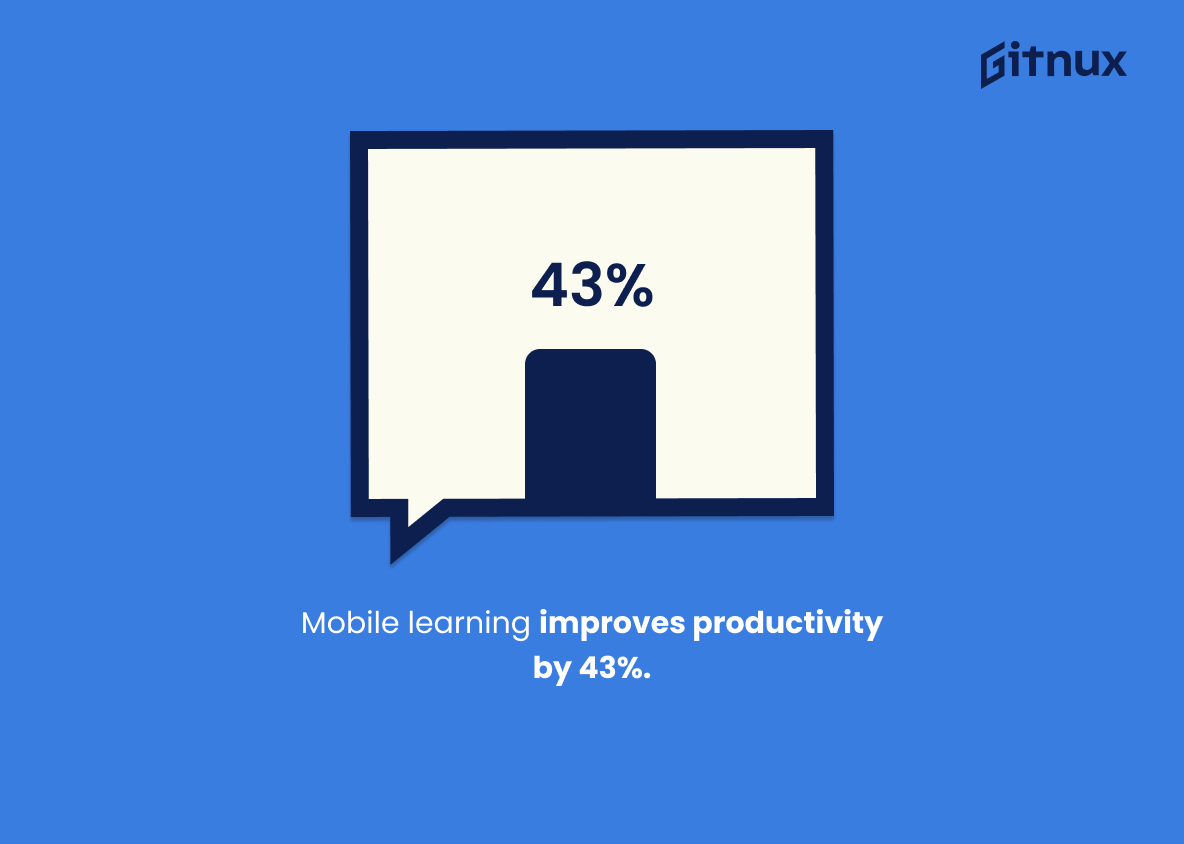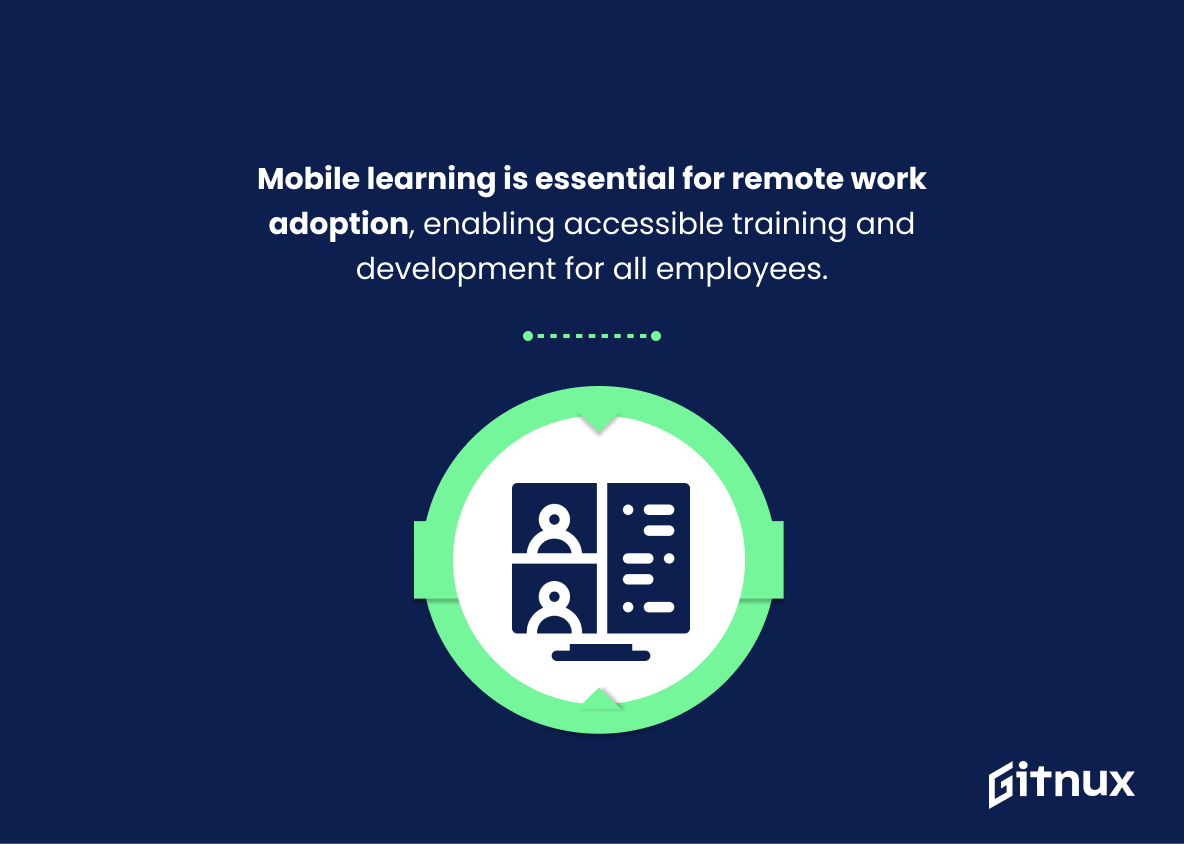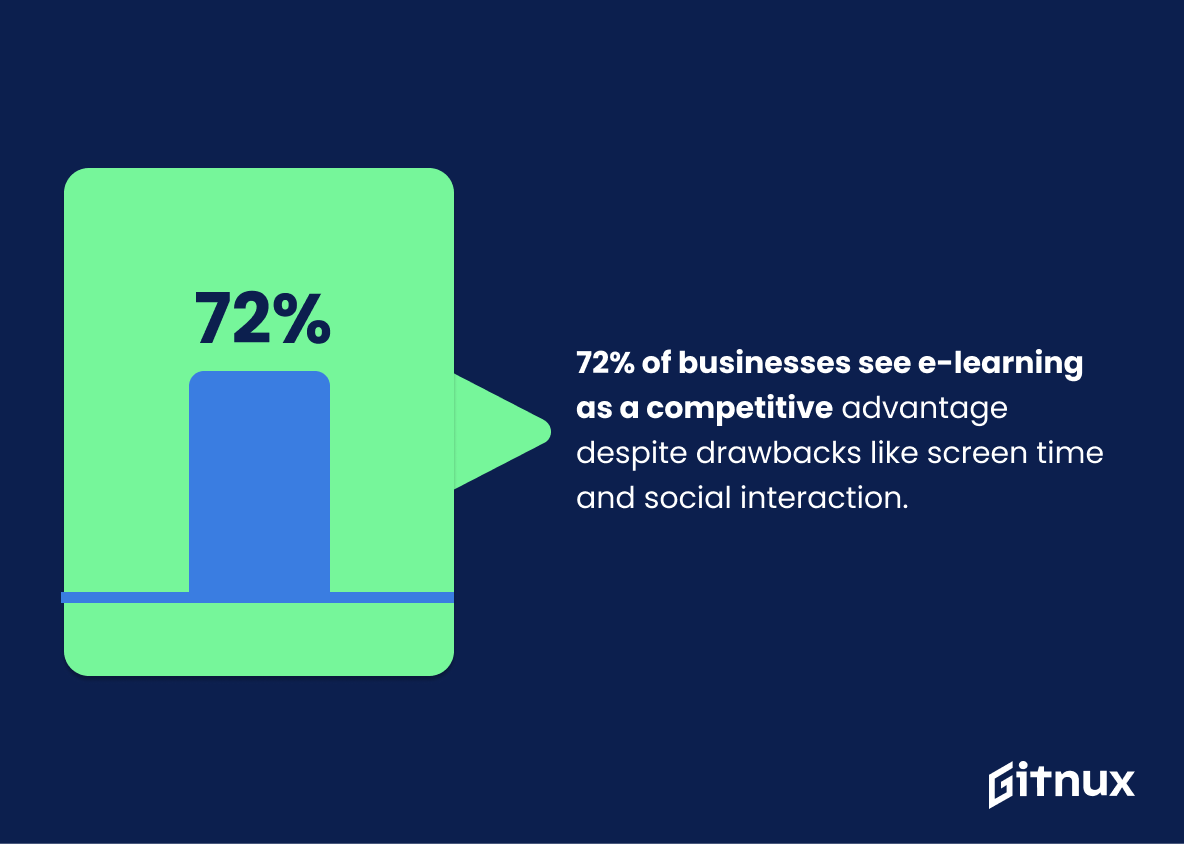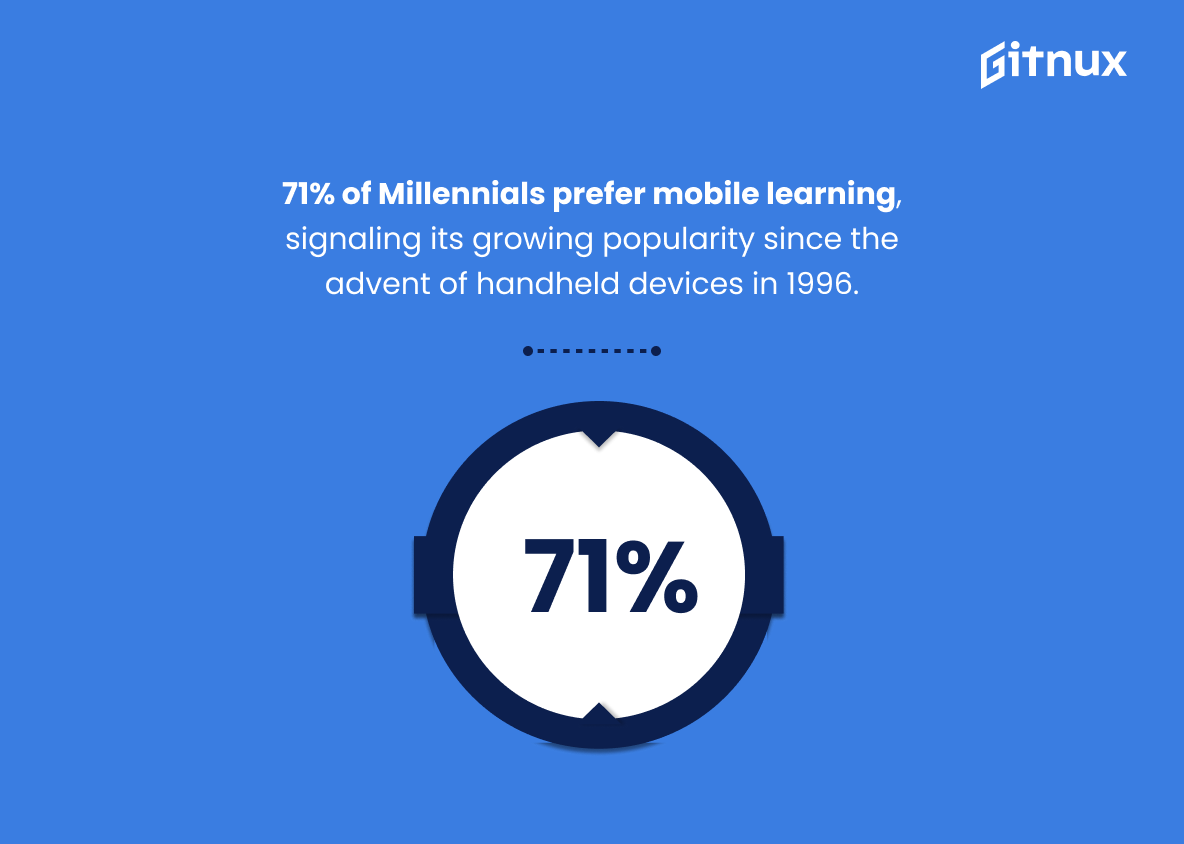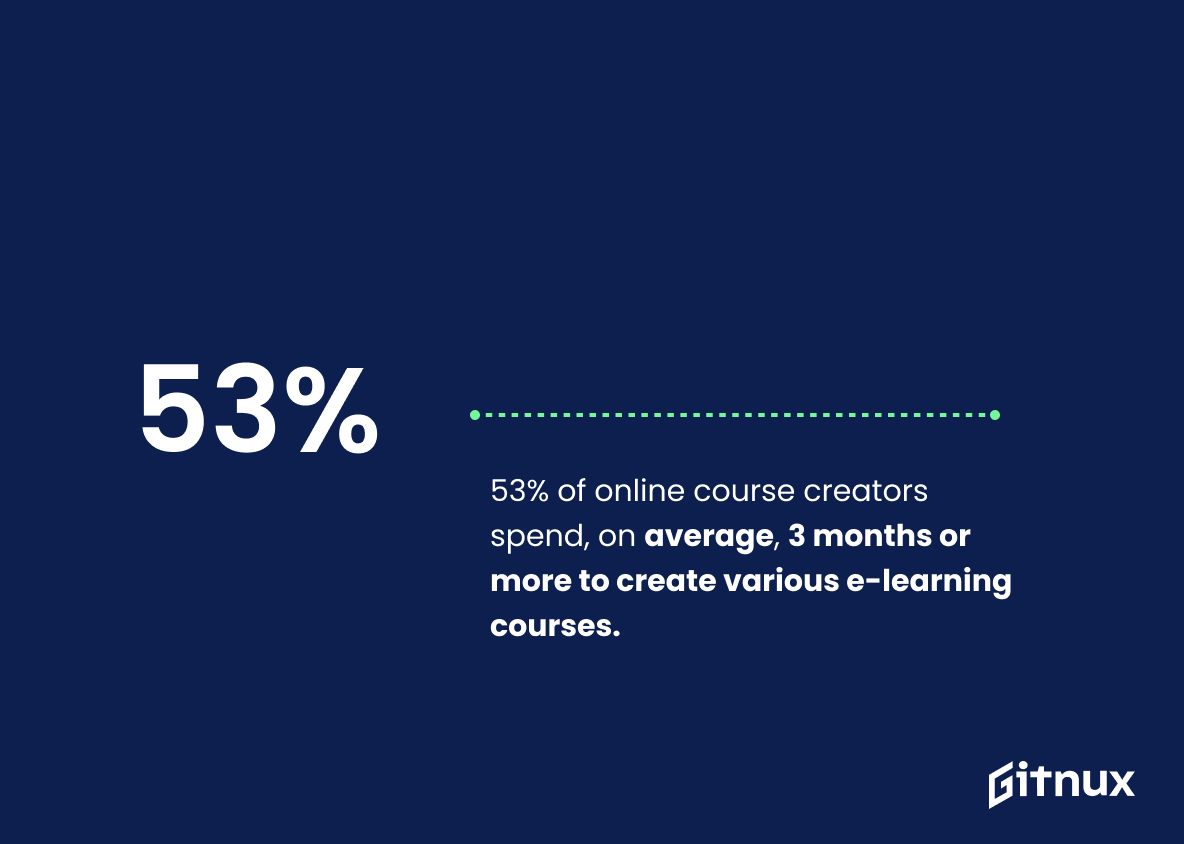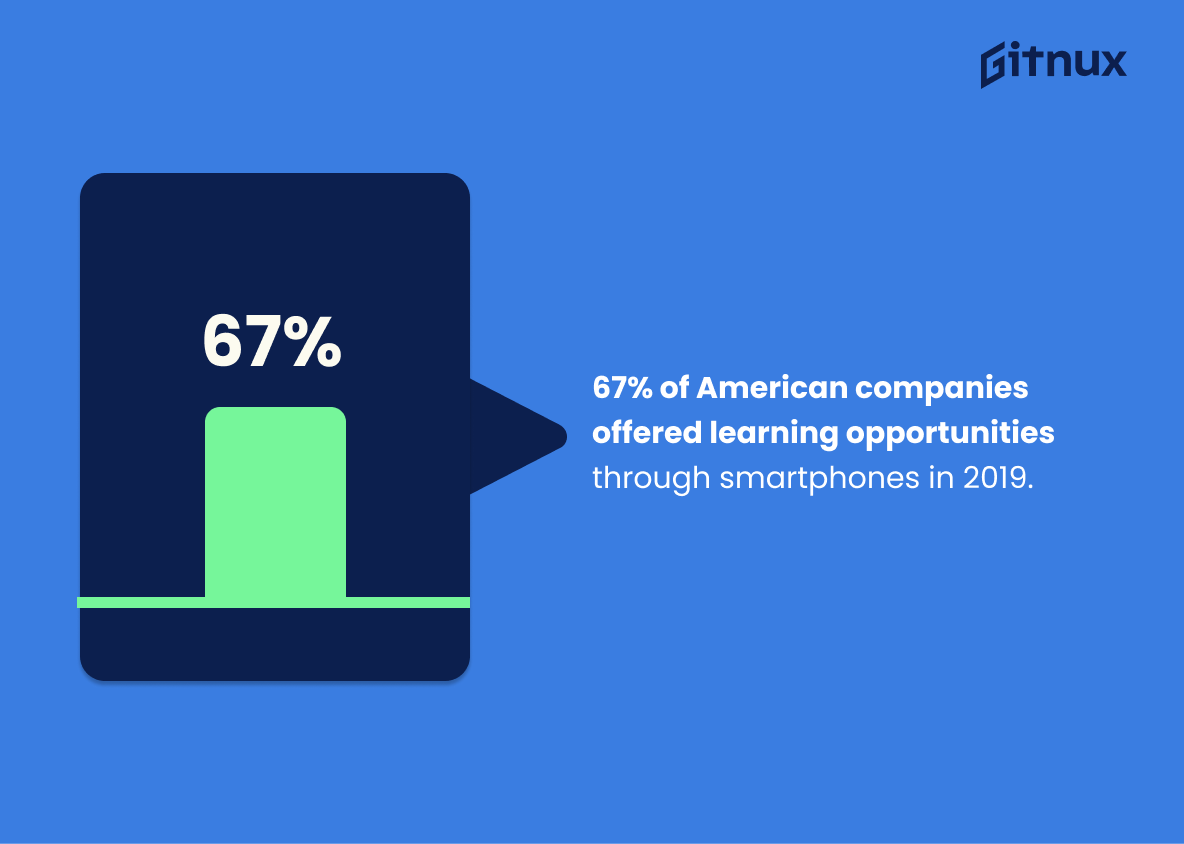Mobile learning is quickly becoming a popular way to access educational content. With the rise of smartphones and tablets, more and more people are turning to their devices to access educational content. This shift in learning has created a wealth of data on mobile learning usage, trends, and outcomes.
In this blog post, we’ll take a look at some of the most interesting mobile learning statistics and explore what they mean for the future of education.
Mobile Learning: Statistics Overview
Mobile Learning Statistics show that microlearning is 17% more efficient, and the market is predicted to expand by $46.9 billion by 2024.
This statistic shows the potential of mobile learning and how it is becoming increasingly popular and in demand. It also highlights the potential for growth in the mobile learning market, which could lead to more opportunities for learners and educators.
Mobile learning improves productivity by 43%.
It shows that mobile learning can have a significant effect on productivity. It highlights the potential of mobile learning to help individuals and organizations increase their efficiency and effectiveness. By leveraging the benefits of mobile learning, organizations can achieve higher levels of productivity and performance. This statistic can be used to help justify investments in mobile learning initiatives, as well as demonstrate the potential returns that can be gained from such investments.
Leaders reported a 55% improvement in their business after embracing mobile learning.
Mobile learning can be a cost-effective and efficient way to improve business outcomes, and it can lead to a significant return on investment. It can be leveraged to improve performance and increase profitability.
One study found 70% of respondents were more motivated to learn when they completed courses on their smartphones.
This number demonstrates the potential of mobile learning to engage learners and increase their motivation to learn. This statistic shows that mobile learning can be an effective way for learners to engage with educational content and increase their knowledge and understanding. It also suggests that mobile learning could be a useful tool for educators to use to inspire and motivate students to learn.
Mobile learning is essential for employee training initiatives due to the increasing number of companies adopting remote work, as it allows for simple and accessible training and development for all employees.
Companies need to adopt mobile learning in order to ensure that all employees have access to training and development opportunities, regardless of their location. This is especially important in the current climate, where remote work is becoming increasingly common.
By 2027, the worldwide market for mobile learning could reach $80.1 billion, and 90% of companies used electronic learning as a training tool in 2020.
It shows the potential for growth in the mobile learning market, as well as the potential for increased learning retention rates with the use of e-learning. This is important for businesses to understand in order to stay competitive and ensure their employees are receiving the best training possible.
Check out our latest E-Learning And Digital Education Statistics
The mobile learning market is expected to reach $155.81 billion in 2026 at a CAGR of 30.12%.
This shows the potential growth of the mobile learning market, as well as the key trend of technological advancement that is driving this growth.
67% of students use mobile phones to complete coursework, compared to 44% of the UK population having a smartphone ten years ago.
It highlights the increasing prevalence of mobile learning, and how it is becoming more widely accepted and used by students. It also shows how mobile learning is becoming more accessible, as the percentage of people with smartphones has increased significantly in the past decade.
72% of businesses report that e-learning confers a competitive advantage, despite potential disadvantages such as excessive screen time, lack of social interaction and potential for distractions.
This shows that businesses recognize the potential of e-learning to give them a competitive edge, despite the potential drawbacks of mobile learning.
71% of Millennials prefer mobile learning over other, more formal modes of learning, showing the increasing popularity of mobile learning since the development of the first handheld device in 1996.
This statistic matters because it shows the increasing popularity of mobile learning over the years. The statistics also highlight the importance of mobile learning in today’s society and the need for organizations to invest in mobile learning initiatives.
E-learning improves learning retention rates by 25 to 60%.
E-learning has proved itself to be effective and can be used to improve learning retention rates, which is especially important for mobile learning, as it allows learners to access the material wherever they are, and to review it quickly and easily. Mobile learning, if done correctly, should be able to provide learners with the same level of learning retention rates as e-learning. This statistic shows that e-learning can be used to increase learning retention rates, which is beneficial for all types of learning, including mobile learning.
Among the top 100 free online courses, technology is the #1 and most popular subject.
Technology-based learning is becoming increasingly popular and is being used more and more as a means of delivering educational content. As mobile devices become more accessible, mobile learning is becoming an increasingly popular method of delivering educational content. Understanding which subjects are most popular among users is essential for understanding how best to provide relevant and engaging learning experiences.
53% of online course creators spend, on average, 3 months or more to create various e-learning courses.
This information can be used to gauge the effort needed to create successful and engaging mobile learning experiences. It also gives creators an idea of the time they need to dedicate to their projects in order to provide the best possible experience for their learners.
67% of American companies offered learning opportunities through smartphones in 2019.
By offering learning opportunities through smartphones, companies can reach a wider audience and make learning more accessible to a larger number of people. This statistic demonstrates that technology is being used in innovative ways to help people learn, which is an important step in today’s digital world.
Conclusion
In conclusion, mobile learning is a rapidly growing trend that has the potential to revolutionize the way we learn. With the right implementation, mobile learning can provide learners with a more engaging and personalized learning experience.
As mobile technology continues to evolve, the potential for mobile learning will only increase. With the right strategies, organizations can leverage mobile learning to create a more effective and efficient learning environment.
References
1 – https://www.learnworlds.com/benefits-of-mobile-learning/
2 – https://www.lorman.com/blog/post/why-mobile-learning-is-important-2021
3 – https://www.enterpriseappstoday.com/stats/e-learning-statistics.html
4 – https://www.globenewswire.com/news-release/2022/09/14/2515718/0/en/Mobile-Learning-Global-Market-Report-2022.html
5 – https://www.edapp.com/blog/mobile-education/
6 – https://www.growthengineering.co.uk/future-mobile-learning/
7 – https://www.skillshub.com/bespoke-elearning/advantages-disadvantages-mobile-learning/
8 – https://www.grannymaster.in/what-the-advantages-and-disadvantages-of-mobile-learning/
9 – https://www.litmos.com/blog/articles/mobile-learning-evolution#:~:text=
10 – https://www.allencomm.com/blog/2021/04/mobile-learning-solutions/
11 – https://www.edume.com/blog/mobile-learning-statistics
ZipDo, cited June 2023: Mobile Learning Statistics

